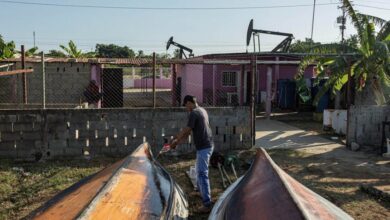Syria: What is the reality of women and girls affected by the conflict?
Acts of sexual exploitation are perpetrated mostly by UN workers, responsible for carrying supplies to areas of conflict

In Syria, the difference between dying and staying alive is no longer easily distinguished. According to the Syrian Center for Political Research, the death toll to 2016 was 470,000 people. The humanitarian crisis triggered by endless fighting between the government, allies, and rebels has caused at least 4.8 million Syrians to seek refuge in neighboring countries. Additionally, another 6.1 million internally displaced people struggle every day to get food, medicine, or simply to stay alive.
As if the tragedy suffered by the population was not enough, a new and heartbreaking report by the United Nations Population Fund (UNFPA), denounced that a large number of Syrian women and girls are being sexually exploited by members of the teams responsible for providing humanitarian aid in the area. There, humanitarian workers, hired by UN agencies and other organizations, retain the supplies sent to the place of conflict and exchange them for sexual favors.
In almost eight years of war that Syria has suffered, all genders and ages have been affected. However, many studies coincide in demarcating women and girls as the most at risk population. They not only suffer violent acts of conflict, but they are also victims of gender violence, sexual violence, and domestic violence.
The report of the UNFPA, under the name Voices from Syria 2018, shows how women, mostly widows or young women, are forced to marry temporarily with humanitarian aid distributors with the aim of ensure for them and their families food. In other cases, the workers exchange food and basic necessities for sexual favors.
These cases of sexual exploitation are largely perpetrated by local providers hired to bring humanitarian assistance to the areas of greatest conflict in Syria. The situation has generated such a degree of fear in the vulnerable community that even some women refuse to go to the aid distribution centers, according to the report.
The agencies splashed by these scandals of sexual violence against the communities deny having knowledge about the practices of their workers and affirm that they will continue carrying out policies of "zero tolerance" with those responsible for the acts. However, this is not the first time that sexual assaults against Syrian women have been reported; in 2015, these types of behaviors had already been reported, but they continue to happen today.
Government’s illegal restrictions
According to details published in the Human Rights Watch World 2017 by Human Rights Report (HRW), organizations of the Syrian government carry out illicit restrictions on humanitarian aid and oblige assistance agencies to go through a bureaucratic system to obtain permits before access the affected areas.
As highlighted in the HRW publication, "the UN Secretary-General said that even in the areas where access to aid was allowed, the Syrian government withdrew essential goods from the convoys. Only in February (2017), the government prevented 80,000 items of medical treatment, including diarrhea kits, emergency kits, antibiotics and other medications, from reaching the besieged areas".
The daily sexual assaults suffered by Syrian women and girls not only come from the aid agencies, they must also suffered the abuses of rebel fighters and members of the Islamic State (ISIS). A report by the UN International Independent Investigation Commission on Syria said that ISIS fighters force Sunni women, who live in areas controlled by the extremist group, to marry them by force.
The reality is that even if the war in Syria ended today, the scourges of the conflict would last for years. The female population has been especially affected by the conflict because of consequences such as the loss of material goods, family, autonomy, and rights’ violation.
Latin American Post | Krishna Jaramillo
Translated from “ Siria: ¿Cuál es la realidad de las mujeres y las niñas afectadas por el conflicto?”





